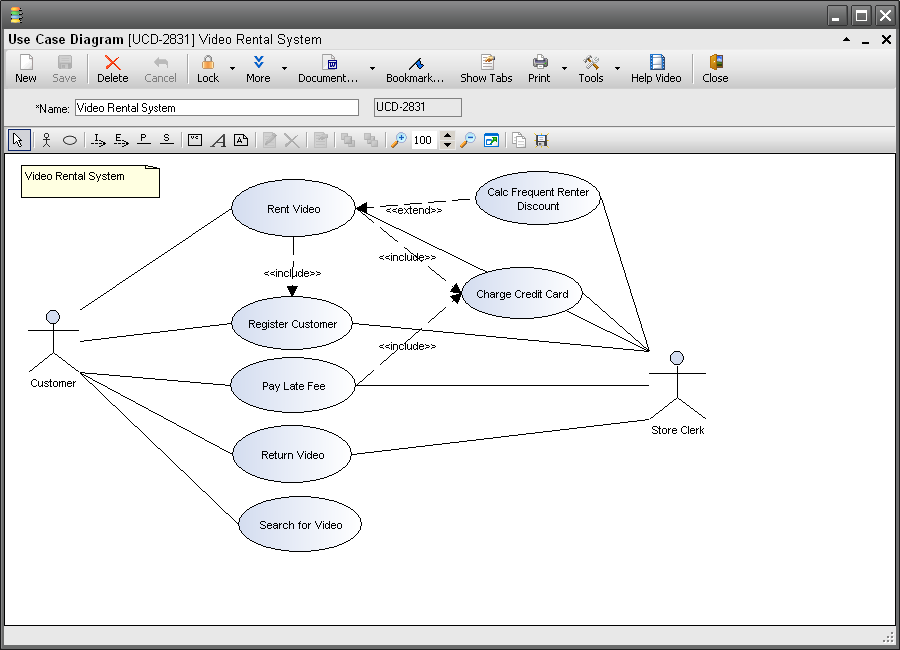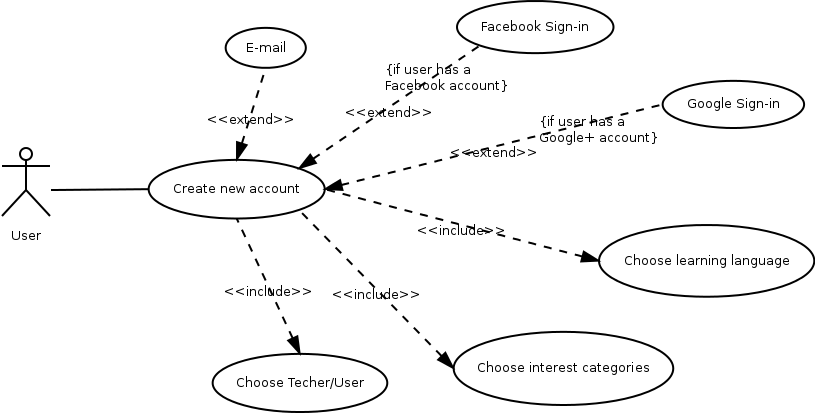

Also, use generalized names to make the modification and presentation simpler. Give meaningful and relevant names to the actors. The general guidelines for identifying the actors are: An actor is a person, an organization, or an external system that interacts with the application being analyzed. In the analysis phase, these diagrams provide an outside view of a system by identifying the system's external and internal factors.Īctors are the external users that interact with a system. Use cases are also convenient in requirement gathering and documentation. Use case diagrams to represent the basic flow of events through use cases. Use case diagrams are used to define and organize functional requirements in a system along with specifying the context.

They show how a user will trigger a response from the system and what is the expected response. They represent the end-user interaction goals and methods. UML use case diagrams are used for many purposes, for example: Thus, they provide a high-level analysis of the design from the outside without worrying about the functionality details. These requirements are later translated into design choices and development priorities.Īpart from the interaction model, use case diagrams also help to identify internal or external factors that can influence the workflow of the system. Use case diagrams to help to visualize the functional requirements of a system. You can also use in-app video chat to further streamline communication.In UML, the purpose of a use case diagram is to demonstrate the different interaction methods for the end-user. With live mouse tracking and synced previews, you can quickly gather what changes they are making.

In a banking system, the most obvious actor is the customer. They are the external entities that interact with your system and can be a person, another system or an organization.

You can start drawing the use case diagram with Creately’s use case diagram tool which comes with a simple drag and drop interface and intelligent use case diagram shapes that make drawing easier.And you get access to it from anywhere in the world. You can easily share your diagram and verify the results. If you edit it multiple times the final version will remain clean. Check out the use case diagram tutorial for a detailed guide.Īn online use case diagramming tool enhances the benefits you get from drawing a use case. They define the requirements of the system being modeled and hence are used to write test scripts for the modeled system. They are also great storyboard tools for user meetings. Use Case diagrams are used to identify the primary elements and processes that form the system.
#Create use case diagram software
The actors (those who interact with the system)Īdvantages of Using a Use Case Diagram Software.Use case diagrams can also be used to document the functionality of an existing system and define which users are permitted to use which functionalities retrospectively. Use case diagrams are applied during the analysis and design process as a way to describe the requirements of the customer and what the future system is for. While it depicts what a system should do and which user of the system uses which functionality, it doesn’t address any realization details such as data structures, algorithms, etc. In simpler words it depicts how a possible user would interact with the system. More Templates What Is a Use Case Diagram?Ī use case diagram is a type of UML diagram that is used to describe the possible usage scenario that a system is developed for.


 0 kommentar(er)
0 kommentar(er)
